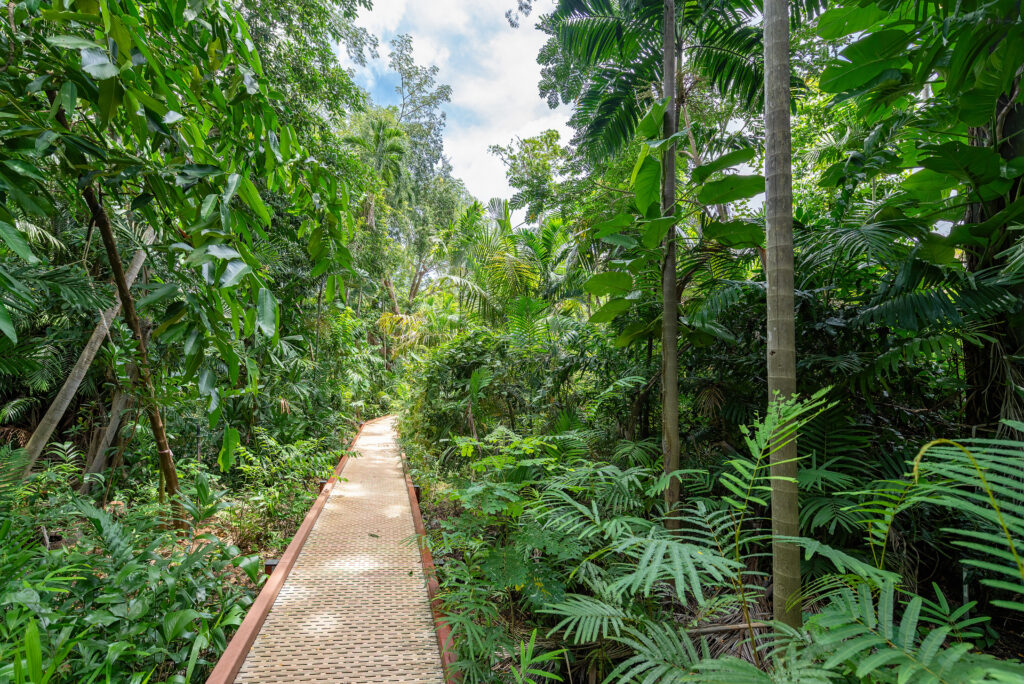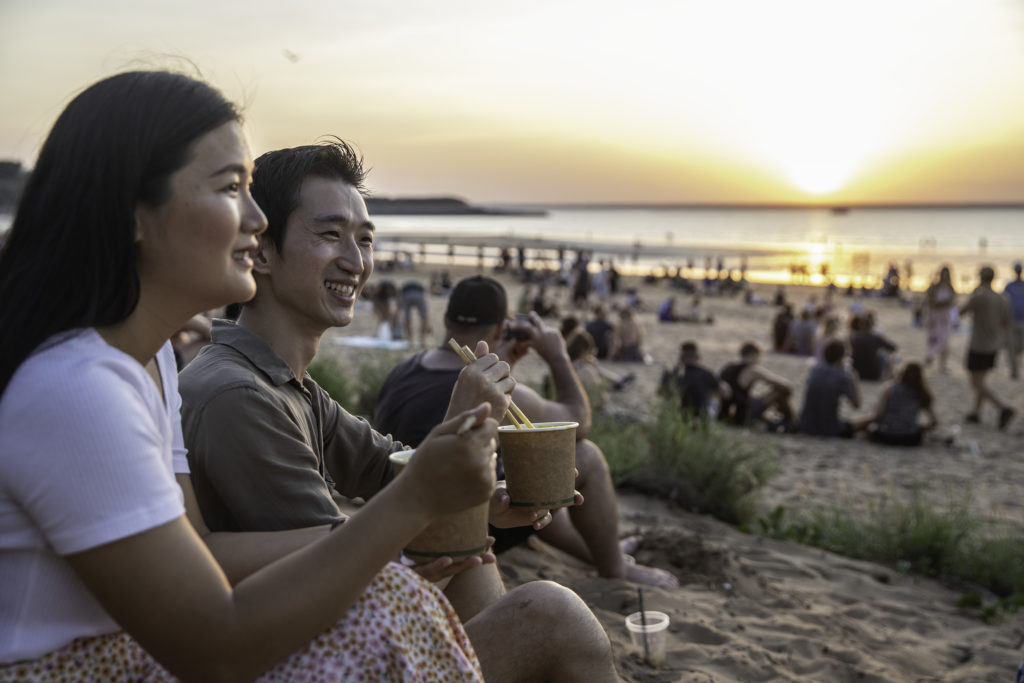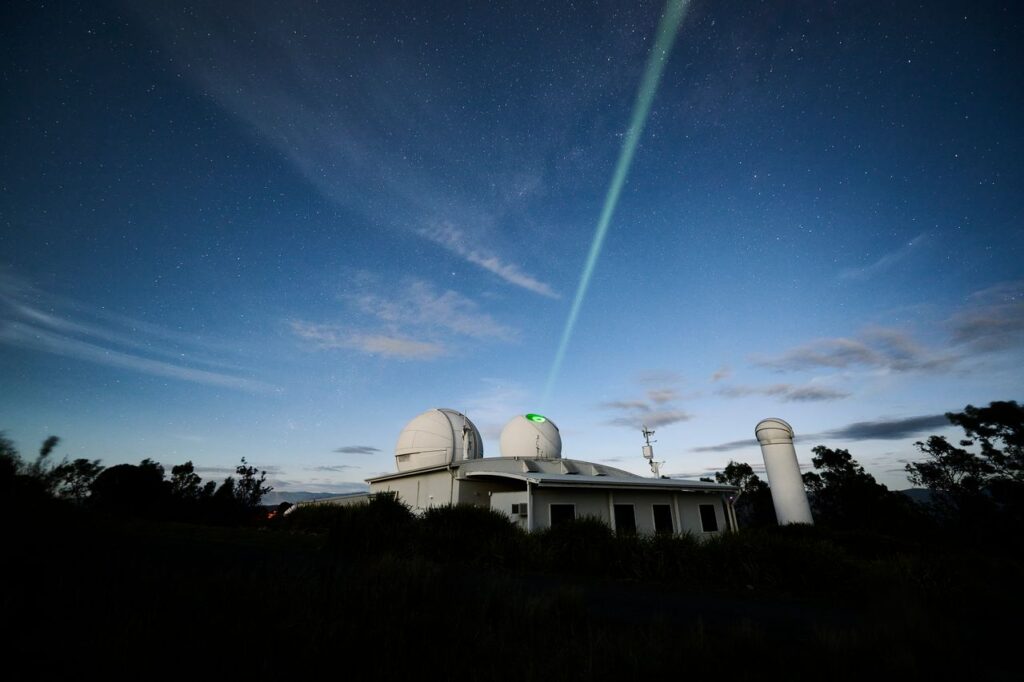Whether you call Darwin home or are planning a visit, the capital city of “Australia’s top end” is filled with interesting history and experiences. Here are six of the coolest facts about Darwin.
Darwin only has two seasons each year
Because of its tropical climate, Darwin experiences a wet and dry season each year rather than a traditional summer, autumn, winter and spring.
While much of Australia’s southern region shivers through winter in June and July, this is actually part of the dry season in Darwin (which runs from May to October).
Many travellers prefer to visit during these months as there is little to no rain, lower humidity and temperatures generally stay between 21-33C.
The wet season goes from November to April, and is typically very hot, humid and – you guessed it – wet!
Temperatures can be a little warmer during this time of year with tropical cyclones, monsoonal rains and storms. Locals will tell you this is when Darwin’s natural beauty, sunsets and nature come alive.
The Larrakia people are the traditional owners of the Darwin region
Connection to country is an important part of Darwin’s identity, which is reflected in the people, celebrations and events in Larrakia (la-ruh-kee-yah) country.
Today, around 2,000 Larrakia people still call Darwin home – a nation who are broadly recognised for their strengths in performance, music and art.
Important cultural events enjoyed by Indigenous peoples and visitors alike in the region include:
- Taste of Kakadu: Enjoy native ingredient-inspired canapés and learn about ancient cooking techniques and their cultural significance in Kakadu National Park
- Barunga Festival: A unique blend of arts, musicians and cultural events like bush medicine and basket weaving
- Darwin Aboriginal Art Fair: Original artworks from over 70 remote Aboriginal and Torres Strait Islander art centres from across Australia
There are more saltwater crocodiles in the Northern Territory than anywhere else in the world
If you hope to get up close and personal with Australian wildlife, Darwin is the place for you. The longest-surviving inhabitant of the Northern Territory is actually the crocodile, and there are two kinds to be found in Darwin:
- “Freshies”: Freshwater crocodiles, which are considered fairly harmless
- “Salties”: Saltwater crocodiles, which measure up to 5m in length and weigh up to 500kg, and are known for being much more aggressive
It’s important to be ‘crocwise’ in Darwin. If you do want to see these animals in their natural habitat, book a tour or experience with a licensed operator.
Some of your options include Croc Jumping tours on Adelaide River, plunging underwater to view them in the ‘cage of death’ at Crocosaurus Cove or, for the more risk-averse, visiting replicas at a museum.
During World War II, Darwin was an important military base
During World War II, Darwin was an important base for soldiers from Australia, the United States of America, the United Kingdom and the Netherlands.
From 1941-1945 it provided air and naval support and operations in the Pacific region.
In 1942, Japan launched air raids on Darwin, marking the first and largest attack on Australian soil. Over 60 additional attacks followed, and this event, known as the Bombing of Darwin, caused damage and casualties to the city.
This important historical event is commemorated at the Darwin Military Museum.
Darwin is a gateway to iconic natural wonders and outback adventures
Darwin is often associated with its rugged beauty and untouched nature. Living in or visiting Darwin gives you an amazing opportunity to visit some of Australia’s most famous natural wonders like:
Kakadu National Park: Spanning nearly 20,000 square kilometres, it features diverse ecosystems like wetlands, rivers and ancient rock art dating back over 20,000 years. This UNESCO World Heritage national park is just a 90-minute drive from Darwin and is celebrated for its stunning biodiversity and rich Indigenous heritage.
Tiwi Islands: Nicknamed the ‘Island of Smiles’, the Tiwi Islands are accessible by boat or plane from Darwin. The area is a stunning natural wonder home to tropical rainforests, secluded beaches and diverse wildlife, as well as the Indigenous people known for their friendly and warm culture, stunning artworks and passion for Australian football!
Litchfield National Park: Only one hour’s drive away, this national park is popular among both locals and tourists, who head here for stunning waterfalls, swimming holes and camping.
Darwin is one of Australia’s most culturally diverse cities
Thanks to its unique history and geographic location, Darwin is home to a rich tapestry of cultures. More than 100 nationalities call the city home, and there are about 140 social, cultural and religious organisations.
You can enjoy this cultural diversity at events like the annual Darwin Festival and the Mindil Beach Sunset Market. Held during the dry season, each features food from around the world, local crafts and live entertainment.
During the year, you can also join various religious and cultural celebrations such as Chinese New Year, and Greek and Indian food festivals.





